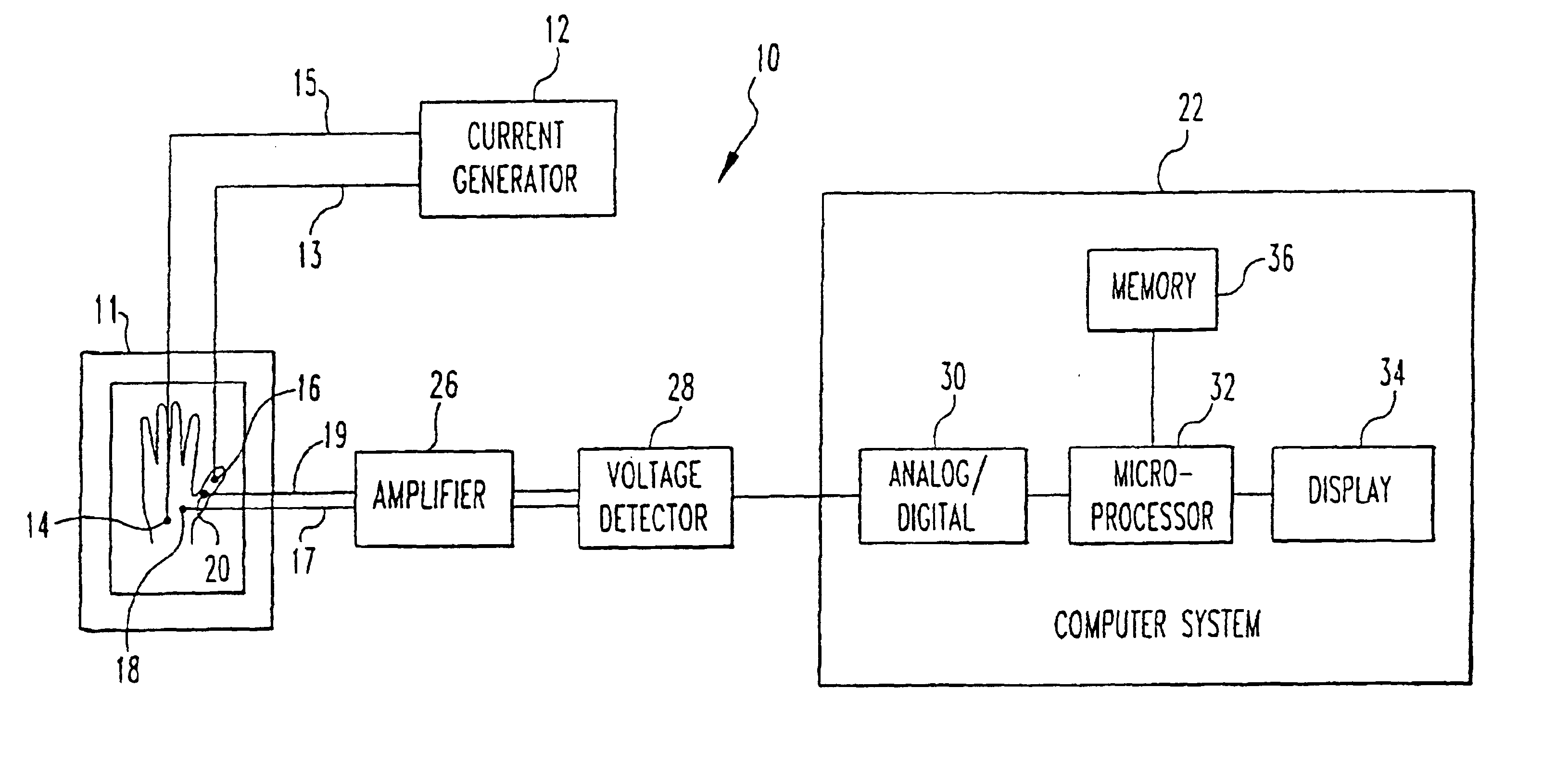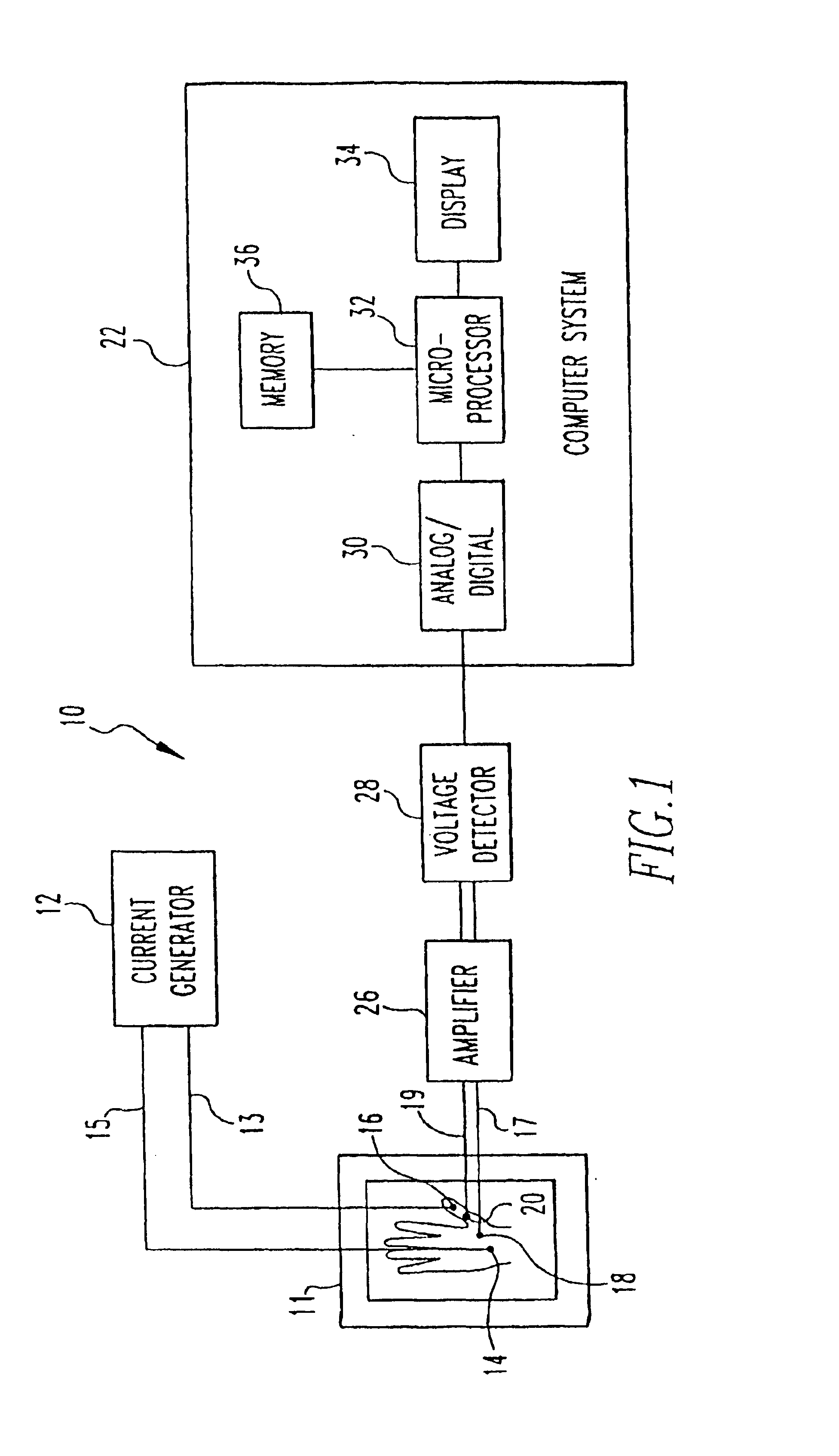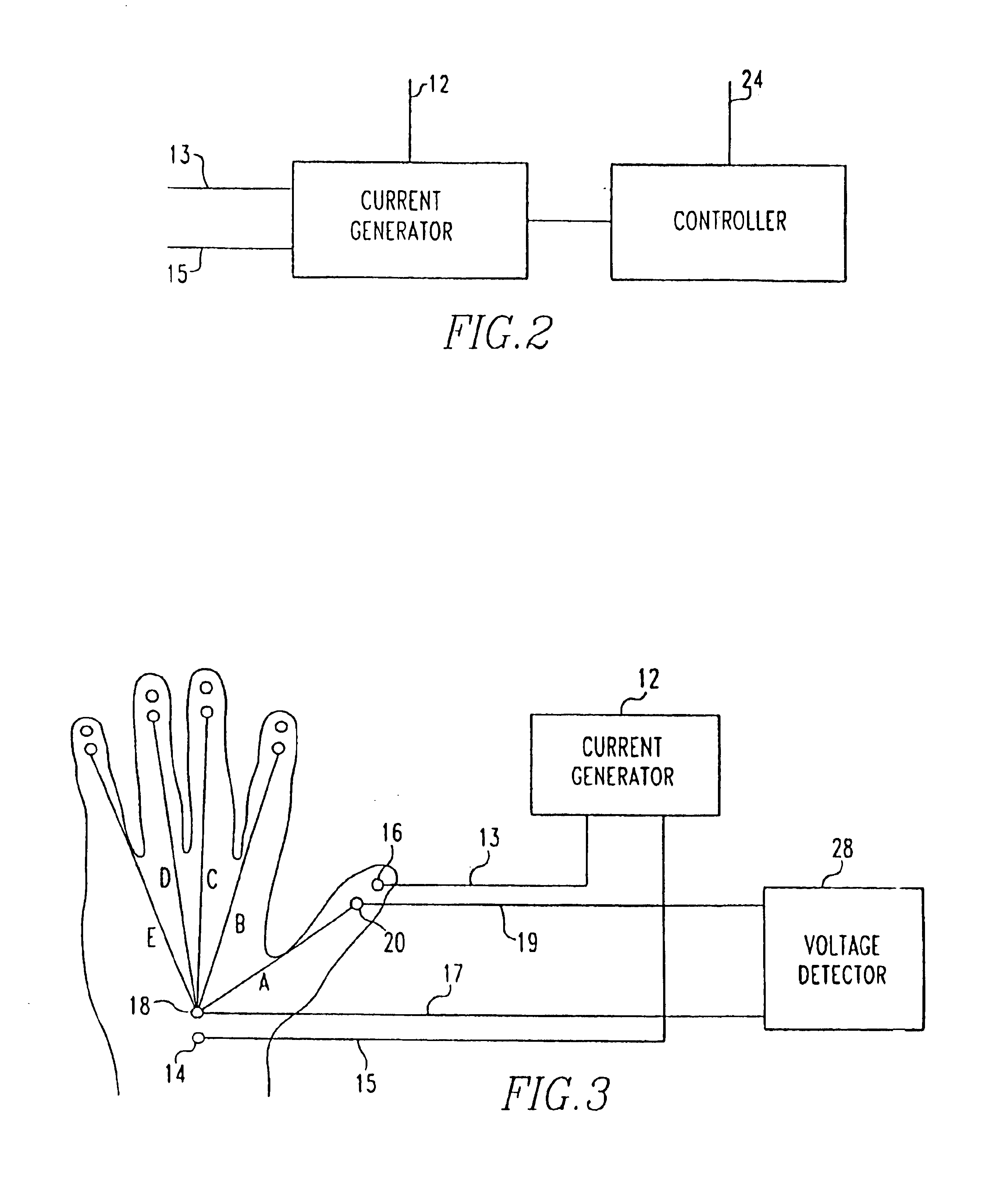Method and system for biometric recognition based on electric and/or magnetic characteristics
a biometric recognition and electric and/or magnetic technology, applied in the field of biometric recognition based on electric and/or magnetic characteristics, can solve the problems of false negative identification, increased loss or theft of cards, and forgotten, shared, or observed identification numbers or passwords, and current commercially available biometric methods and systems are limited
- Summary
- Abstract
- Description
- Claims
- Application Information
AI Technical Summary
Benefits of technology
Problems solved by technology
Method used
Image
Examples
examples
I. Financial Transactions
[0480]A. Banking and payment—ATM tellers can be equipped with hand units with six round electrodes, 1 mm thick×2 mm diameter. Biometric authorization could be required for a bank customer to deposit, withdraw, or transfer funds from a checking, savings, money market, CD, credit card, debit card, stored value card, or other type of account. The hand unit electrodes read the customer's hand biometric pattern. The present pattern data is communicated to the ATM or teller computer 158, as shown in FIGS. 109, 100, 112, 113 or by modem 197 or wireless means to another bank computer 158, for comparison with the known biometric pattern on file, as shown in FIG. 111. This can be done in either identify or verify mode. Matching of the biometric pattern authorizes the customer to proceed with the banking action.
[0481]Bank cards 170 with sensors 333 can be used in place of hand units. The biometric pattern might be the acoustic pattern from the bone at the end of the th...
PUM
 Login to View More
Login to View More Abstract
Description
Claims
Application Information
 Login to View More
Login to View More - R&D
- Intellectual Property
- Life Sciences
- Materials
- Tech Scout
- Unparalleled Data Quality
- Higher Quality Content
- 60% Fewer Hallucinations
Browse by: Latest US Patents, China's latest patents, Technical Efficacy Thesaurus, Application Domain, Technology Topic, Popular Technical Reports.
© 2025 PatSnap. All rights reserved.Legal|Privacy policy|Modern Slavery Act Transparency Statement|Sitemap|About US| Contact US: help@patsnap.com



